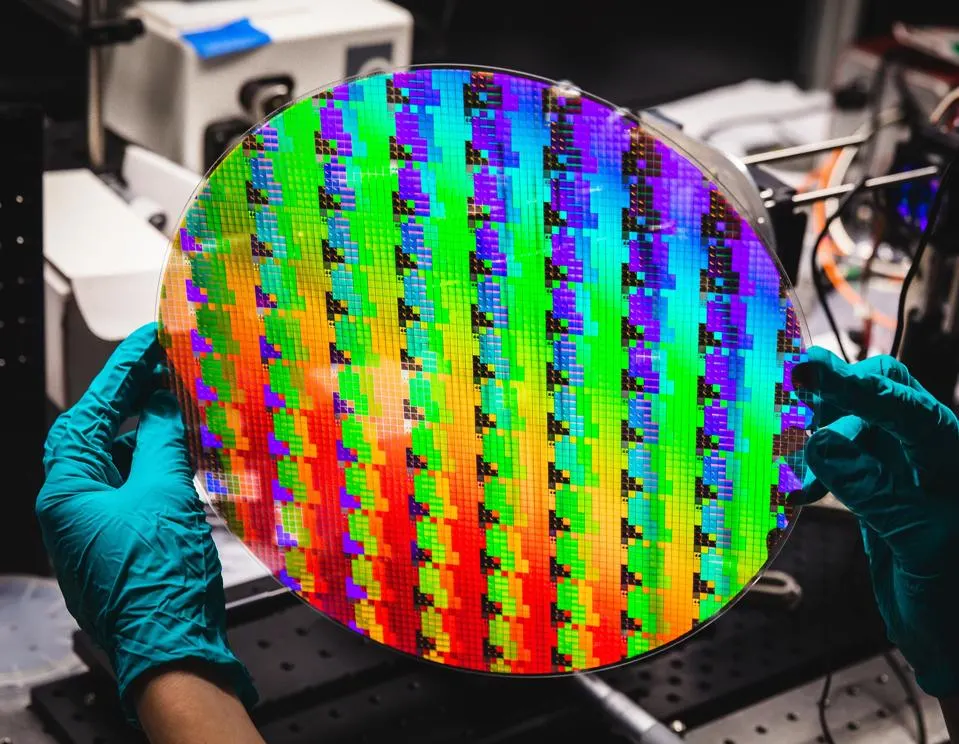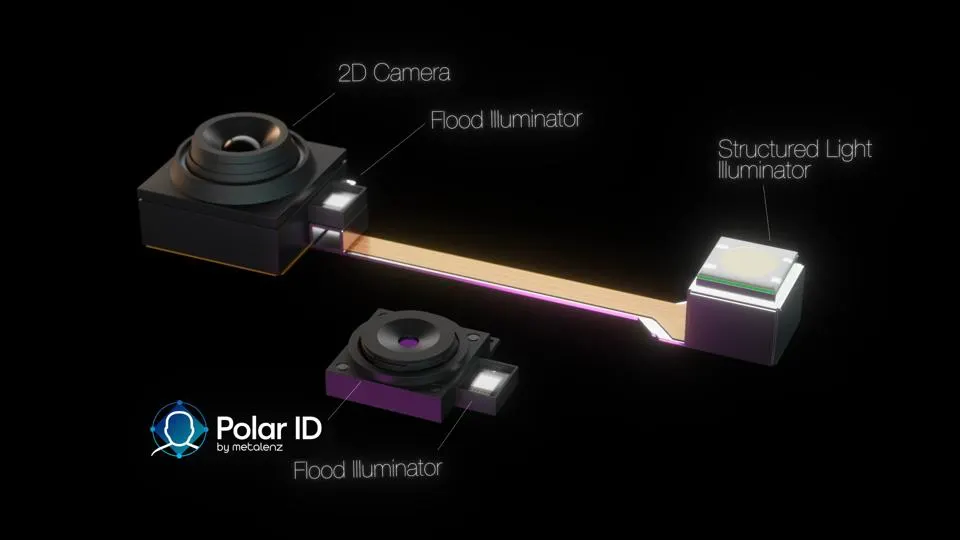This Could Kill The iPhone Notch, Bring Cheap FaceID To Android, And Medical Apps To Your Camera
Forbes
John Koetsier
April 30, 2024

A Metalenz wafer with up to 10,000 metasurfaces camera lenses. ©2022 Brandon Fitts
Own an iPhone? You probably have a notch at the top of your screen, just like your iPad, and just like your MacBook, if you own those products as well. But a new metasurfaces camera technology from a startup in Boston should be able to eliminate that notch as well as—perhaps more importantly—bring truly secure Face ID to lower-end Android phones.
“iPhone has this face unlock feature, but it really hasn’t propagated outside of the iPhone because that module is very expensive, very complicated, and takes up a lot of space,” Metalenz founder and CEO Rob Devlin told me recently on the TechFirst podcast. “Android phones have wanted biometric authentication. But haven’t been able to essentially foot the bill because it’s too expensive.”
iPhones accomplish face unlock with a front-facing camera, a light, and an illuminator that projects about 30,000 invisible dots across your face. The combination of those components is needed in order to do high-security 3D verification that you are indeed you, and it actually is safe to unlock your phone. It works in low light thanks to the use of infrared, and is hard to beat, with better security than visible light cameras alone.

The iPhone’s FaceID camera system compared to Metalenz’ Polar ID Metalenz
It also costs between $10-15, making it an expensive part of the phone to manufacture. Android phones have wanted to replicate this experience, says Devlin, but it’s been too expensive for some of the price points they’ve wanted to hit.
For instance, the Galaxy S20, released in 2020, uses simple 2D facial recognition. The problem with that, according to Android Authority, is “you get a 2D model of your face that can be fooled by a photo.” Google’s Pixel 4, released around the same time, uses a flood illuminator and dot projector—like iPhones—to significantly enhance security. Even today, the Galaxy S24 has issues with face recognition for some users.
If that’s the top end, how will low-end, cheaper Android phones compete? The answer is they often don’t, which is why almost half of Android phones tested from manufacturers such as Nokia, Xiaomi, Oppo, Honor, and Motorola could be unlocked with just a photograph, a study found in 2023.
All models of iPhone passed the test, “thanks to Apple’s Face ID system, which uses sensors to create a 3D depth map of the user's face.”
“Some of the more sophisticated ones where they started applying more AI and some machine learning, you can’t trick them with a picture, but you can still trick them with a mask,” Devlin says.
But people are using these systems despite the problems because it’s more convenient.
Devlin says Metalenz has a solution: cheap but still high-fidelity and high-security facial recognition using the company’s metasurfaces innovation, which enables it to print camera lenses like computer chips, 10,000 to a wafer. Metalenz calls it Polar ID because it captures light’s polarization. Polarization is a complex process describing how light waves oscillate as they travel, but the key insight is that they reveal important details about the composition of the material created or reflect the light waves, which is how astronomers can tell us insights about the chemical composition of stars and planets trillions of kilometers away.
“Whenever light hits anyone’s face, when it bounces off the shape of your face, the material that your face is made up of versus a perfect 3D mask of you will polarize the light differently,” Devlin says. “If you pass this through traditional imaging systems, it throws away that information. But when we put a metasurface in there, we can actually parse, sort, and retain that polarization information. So it allows us to make a shape map of your face, but then it also allows us to say, this is human skin and not silicone.”
In other words, Metalenz has found a way to read polarization data with a tiny, flat chip that can be printed thousands at a time in silicon, enabling access to the infrastructure of the semiconductor industry, which can scale production to billions if not trillions.
It’s something that costs about a third of Apple’s FaceID hardware, meaning that it could be cheap enough, finally, to bring to even lower-end Android phones. Plus, of course, work in an Apple device without requiring as large a notch—or even any notch at all, in future potential an under-screen version.
But the possibilities are significantly bigger than that.
Light polarization cameras in industrial labs can cost about a thousand dollars. (This one with a five megapixel sensor is almost $3,000.) Now the solution is available for around $5, and it enables medical applications in a standard hand-held smartphone.
“It’s a whole new information set that hasn’t been there for users,” Devlin says. “There are a known set of applications you can look at, say a growth on skin, and you can tell whether it’s cancerous based off of the polarization information. You can do things like air quality monitoring. So you can actually, with polarization, tell what the local air quality is.”
Smartphones are the Star Trek tricorders of today.
They already have sensors for visible light, sound, infrared light in many cases, radio waves in multiple frequencies, and potentially more. Now we have the potential to add to a smartphone’s capability, or sensorium, with technology that can detect the composition of elements—even in trace proportions—all around us.
That’s a significant new capability that, if all goes according to plan, could soon be on billions of devices around the planet.
Metalenz is partnering with ST Microelectronics, the $36 billion European supplier to the electronics industry including smartphone manufacturers. Devlin says the company is providing metasurfaces components for a module that ST Microelectronics has previously shipped for about 150 different smartphone models which have historically sold about two billion units.
Which means there’s a lot of room for growth. Including possibly with the giant of the smartphone industry, Apple itself.

